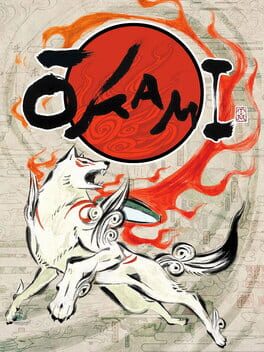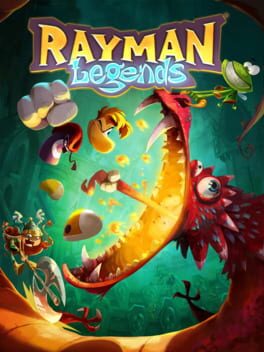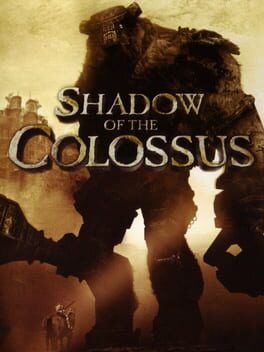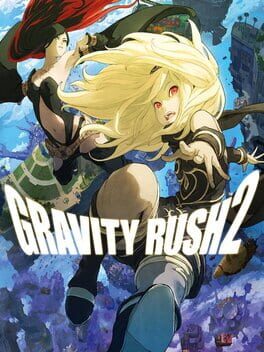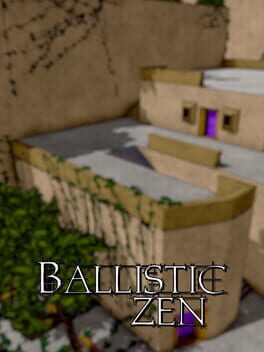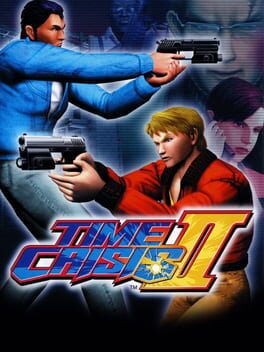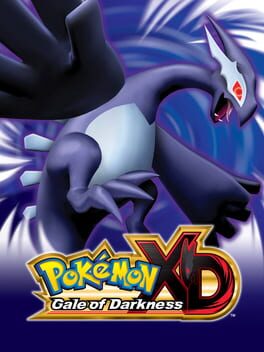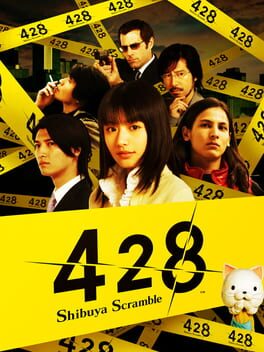Drax
BACKER
I play the vidjo gaem
Badges

Replay '14
Participated in the 2014 Replay Event

GOTY '23
Participated in the 2023 Game of the Year Event

Early Access
Submitted feedback for a beta feature

Pinged
Mentioned by another user

GOTY '22
Participated in the 2022 Game of the Year Event

Clearin your Calendar
Journaled games at least 15 days a month over a year

Famous
Gained 100+ followers

Trend Setter
Gained 50+ followers

Treasured
Gained 750+ total review likes

Shreked
Found the secret ogre page

Organized
Created a list folder with 5+ lists

Listed
Created 10+ public lists

Full-Time
Journaled games once a day for a month straight

Roadtrip
Voted for at least 3 features on the roadmap

Gone Gold
Received 5+ likes on a review while featured on the front page

Adored
Gained 300+ total review likes

Busy Day
Journaled 5+ games in a single day

Best Friends
Become mutual friends with at least 3 others

Popular
Gained 15+ followers

Donor
Liked 50+ reviews / lists

On Schedule
Journaled games once a day for a week straight

3 Years of Service
Being part of the Backloggd community for 3 years

GOTY '21
Participated in the 2021 Game of the Year Event

Loved
Gained 100+ total review likes

Well Written
Gained 10+ likes on a single review

Liked
Gained 10+ total review likes

Epic Gamer
Played 1000+ games

Noticed
Gained 3+ followers

Elite Gamer
Played 500+ games

Gamer
Played 250+ games

N00b
Played 100+ games
Favorite Games
1865
Total Games Played
017
Played in 2024
3544
Games Backloggd
Recently Played See More
Recently Reviewed See More
“But Drax, you like that other famous roller-skating game with restrictive controls and heavy set-piece usage; why doesn’t Ballistic Zen get a pass?” Simply put, Jet Set Radio never feels too restrictive because a good chunk of the game involves learning the ins-and-outs of its massive levels and figuring out how to plan routes and string together set-pieces to efficiently rack up points for a good ranking. The game’s various scoring mechanisms (high health, chaining tricks, spraying graffiti, etc) combined with its interconnected level design allow for a fairly robust range of approaches that never gets old. Meanwhile, Ballistic Zen is a string of linear runs that have no impact upon one another. You enter a new area, trace a bunch of separated lines one at a time, and move onto the next area to trace more lines. There’s no decision-making or player creativity when approaching these challenges; you just have to jump at the right time and build up enough speed to pass the execution tests. While there are some stray collectible diamonds that give a little reputation, they pale in comparison to the sheer number of lines scattered around the levels, and the absence of freeform time trials to encourage the player to experiment with new routes means that the repetitive content is unfortunately the mainstay of the game.
Maybe I’m being a little uncharitable to this three-hour title, but half of my time in-game was spent navigating the samey environments over and over because lines can only be tackled in one direction. Having to traverse the same territory with spent lines trying to find the beginning of another obstacle course with no point of reference puts a damper on the game’s pacing. Additionally, Ballistic Zen’s verticality really works against it as a major obstacle to its interconnectivity; without any fast-travel to immediately teleport to other key locations, the only way back up is to use a player teleport (if you’ve laid down a relevant respawn) or to slowly make it back up the long way around. It’s also super easy to get lost since there’s no map or signs/distinct landmarks, and since you can only teleport to the last spawn placed down, you’ll find yourself wasting a lot of time using the player respawns as intended. I hate to say it, but this replay has left me even more lukewarm than when I first finished it last winter. At least you can pay what you want for it on itch.io.
This is the first narrative-driven game in quite some time to leave me completely dumbfounded. There’s so much to unpack over the course of its twenty-hour runtime, and yet it felt like it was over in a few blinks. I don’t know if I have the expertise or the wherewithal to give a full breakdown of what it has to say, so I’m just going to talk about what’s in front of me for now.
Until Then is a slice-of-life visual novel set in the contemporary Philippines. You play as Mark, a high school slacker who seems content doing the bare minimum to get by in life. As he tries to navigate the growing responsibilities between academics and his friends and family, he becomes increasingly involved in a series of extraordinary phenomena behind a series of incidents dubbed “The Ruling.” Mark does his best to keep his head down of course, but something inside him stirs. He wants more, and the world wants so much more.
I was quite skeptical about how Until Then would translate this experience into a video game, but I’m honestly super impressed at how well it navigates the medium with its limited toolkit. Much of the game’s interactivity comes down to various scattered minigames: a few carnival stands for popping balloons and tossing coins, a Rhythm Tengoku knock-off on a caravan, and some more rhythm game segments during a piano club audition. That said, none of these detract from the central focus of the game. Rather, I find that these segments feed right into the game’s central conflict of escapism versus reality. There’s a thin veneer of joy and nostalgia found in all of these little moments, but you can’t help but feel that it’s all a distraction. Something deeper is gnawing away at everyone all the time, and just because they pretend that everything's okay doesn’t mean it’s not there.
This pervasive element of fleeting escapism seeps its way into every little detail that the game fully capitalizes upon. This can be seen from the way Mark quickly types and deletes his unspoken messages while chatting with others, to the way his expression changes as he scrolls through and reads his friends' posts, to the way the game frames its shots as the characters uncomfortably glance about or stare into the distance, to even the subtle ability of the player to slightly manipulate the camera during cutscenes to remind the player that this really is happening, even as the player can’t change a damn thing. The game squeezes every bit of nuance out of its usage of player perspective and control, and not a single moment goes to waste.
Speaking of which, the pacing is excellent. It opens a bit slowly as the game introduces more characters alongside the world’s many decaying set-pieces and rumblings of catastrophe. Most of these early scenes are spent on seemingly inconsequential matters: taking the train to school, cramming in Powerpoint slides last minute for a book report, and the usual fare of light-hearted high schooler activities. As the anachronisms grow in size and frequency though, the disorienting background elements start to taking center stage until they can be no longer ignored. Until Then proceeds to further amplify these effects by implementing the cyclic nature of video games into its overall structure (and you absolutely should hit Continue after clearing Chapter Five). Over the course of multiple playthroughs, the subtle differences found between the world and its inhabitants continue to erode the player’s understanding of everything around them until finally, the game's many threads converge upon one another and tear away the last shreds of certainty with no pit stops in-between. While the game never outright lies to its audience, it nevertheless effortlessly makes the player doubt themselves over and over again. It’s ineffable yet never inscrutable, the perfect balance of explaining just enough to the player to pique their curiosity while never giving too much away so there’s room for imagination to fill the blanks.
That’s about as much of the game as I can explain without spoiling the core experience. Until Then is simultaneously everything I wanted in a story-heavy game yet also everything that I never knew I wanted to begin with. It’d be easy to say that it’s got elements of other video game narratives I’ve loved over the years (Oxenfree, Necrobarista, and Spiritfarer, just to name a few), but it’s also something much more than that. You know how sometimes you wake up after a cozy dream and you’re crying, but you don’t know why? I’d imagine that this game tries to answer that question, while asking so many more questions of its own.
Memory is a fickle thing. People and places we know slip in and out of our comprehension until they need to be recalled. Even the most memorable events often become glimpses of fuzzy feelings as the years go on. For what it’s worth though, I can’t see myself forgetting about this game. In a year of exemplary indie releases, this stands tall and proud amongst its peers and is an easy contender for my game of the year. Please give the demo a shot if anything I’ve said here has sparked your interest. It might just be my recency bias coming in strong, but I’ve got a really good feeling about this one. Until Then is one of those rare titles that's left me feeling empty after finishing because I doubt anything coming up soon will emotionally top this for me. I don’t know if my two-dollar speak can do this justice, and that’s okay; it’s just one of those games that has to be experienced to be understood.
After all, the world hasn’t ended yet. Until then, why not give it a try?
